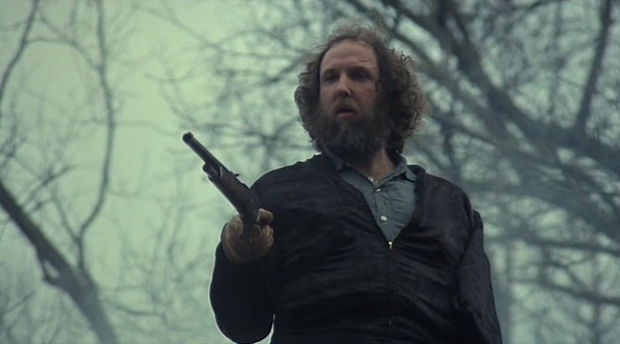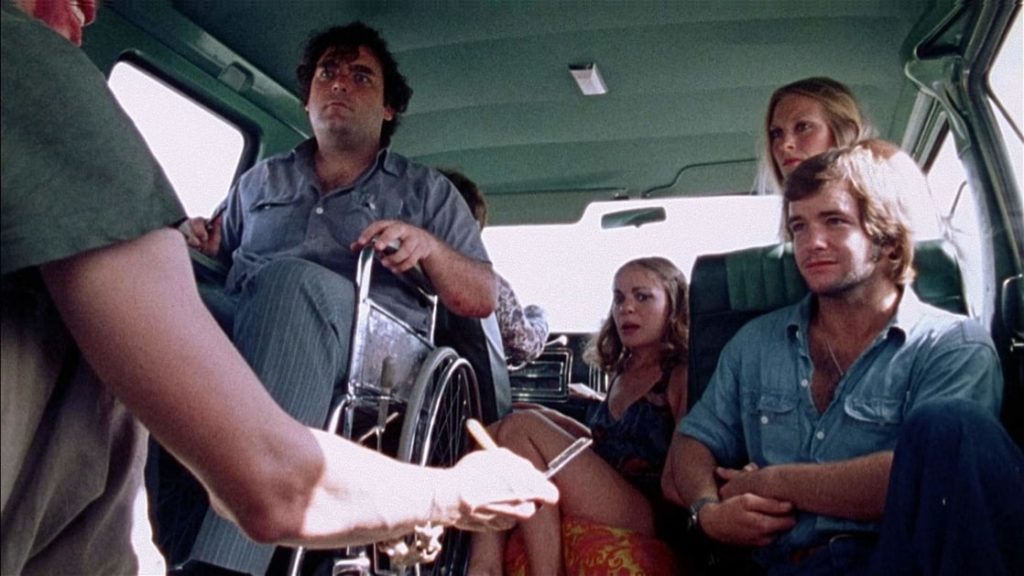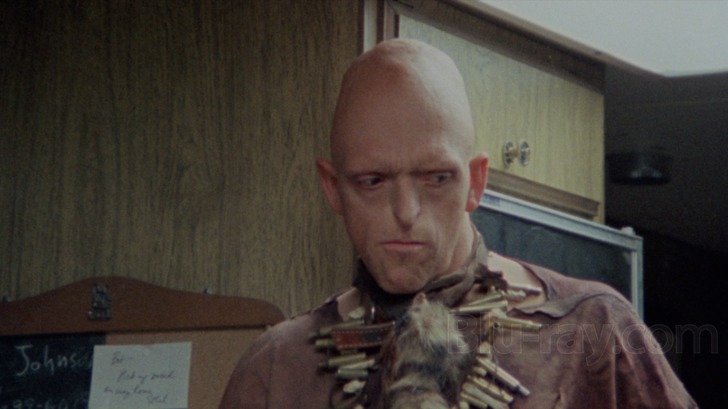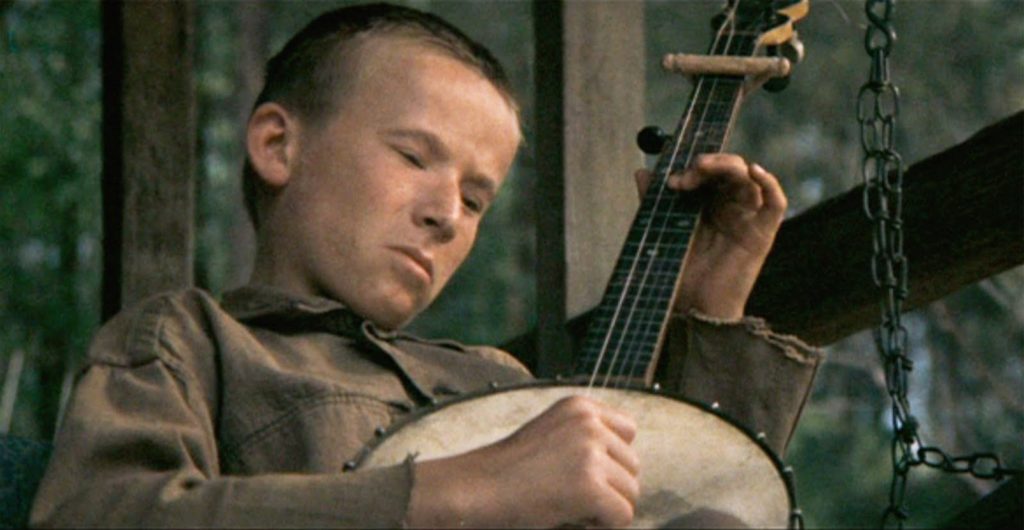The scene is so familiar. A group of friends headed out to the great outdoors, all staying in a cabin in the woods. As diverse a group as you’d find, each with their own quirks and agendas. There’s camaraderie, romance, one-upmanship, and tension, especially sexual tension. Yet, something feels a little … off. One of the group senses that they are not alone, and this fear spreads. Is there someone else out there, hiding in the trees, staying close to the shadows, lurking in the dark, waiting for the prefect time to strike? There are tales of strange people who make these woods their home, how they have weird customs that don’t fit in with the rest of the “civilized” world. That guy who worked at the gas station along the way sure was strange. And those meats under the glass at the counter, surely that was just road-kill, right?
Springing from the Southern Gothic, Hillbilly Horror is a massive trope within horror, and one that is often misused and abused, even with the best intentions. Mark Twain probably helped this genre come about, but early literature has examples from Edgar Allan Poe, H.P. Lovecraft (‘The Call of Cthulhu’ is but one example among many), the work of William Faulkner with his weird characters and macabre undertones, and of course, the queen of Southern Gothic, Flannery O’Connor, whose work literally oozes with the trope. The hillbilly aspect doesn’t necessarily have to be set in the south, as there are rural areas in every state and country throughout the world. With a few exceptions, most of these writers barely dabbled with horror, but yet it permeates the work through and through with a mastery of tone and atmosphere, so much so that you wouldn’t be surprised to read of ghosts or other supernatural entities within the pages. In fact, it would be welcomed with open arms.
Somewhere along the line, this trope shifted in tone to outright horror. Writers such as Jack Ketchum and Edward Lee are among the best to work within that shift. But before the writers moved into that territory, it’s important to note that film had a huge part in developing this trope. The Texas Chainsaw Massacre is the epitome of Hillbilly Horror, the mother of them all that sets the tone in such a way that every single entry following it pales in comparison. In fact, the better of the rest achieve high marks simply because they slightly shifted the horror yet remained visceral and suspenseful. Films such as Deliverance and Southern Comfort could easily be identified as horror films in their own right, though they clearly tick most of the boxes necessary to classify them as Hillbilly Horror.
The rural setting, outsiders intruding on a world much different from their own, the people of the area holding their customs, and secrets, close to the vest, and the general sense that no one in their right mind would ever believe what’s happening to you or your friends, so please scream your head off, no one is going to hear you.
The biggest takeaway from this trope is that not only have they been killing outsiders for years, perhaps decades, but they’re going to get away with it again and again. Even if you somehow manage to escape and fight back, ‘the saw is family’, and there’s always some little off-shoot of people in the area willing and able to take over the reign of terror. Occasionally, the regular people are the ones who created these backwoods crazies, as evidenced in The Hills Have Eyes. Wes Craven was smart to relocate them to a desert, as the different setting gave the film its own personality away from the sun-scorched Texas landscape. It wasn’t until the remake of the film that the mutant aspect of the characters was fully applied. Using families damaged by atomic bomb testing in the desert as antagonists, these mutated people harbor a somewhat rightful anger and resentment of outsiders, and will do anything to maintain their existence, including kill. And yet there’s a subtle tinge of sympathy for them as we understand that we were the ones who created this situation in the first place. Of course, that feeling is only temporary, and ultimately the murderous family gets what’s coming to them.
Or did they?
When played as parody or satire, the Hillbilly Horror brings only a few entries to the table, with Tucker & Dale Vs. Evil and The Cabin in the Woods being the best of what’s out there. Throw in the supernatural, and The Evil Dead films take the crown. There are a lot of films that dabble with the Hillbilly Horror genre, the most well-known being the Friday the 13th series, Motel Hell, and Camp Sleepaway, though most of these are more straight-up slashers. More recently, Cabin Fever and Wrong Turn, each with their own franchises and remakes, definitely fall into the Hillbilly Horror category, but nonetheless offer tired and worn out stereotypes that fail to create tension or amuse beyond the first viewing. The horror of this trope comes from the setting, the fact that the crazed clans get away with the evil again and again, and the natural fear of being the ‘other’, from both sides of the fence. Adding more violence and gory special effects doesn’t make anything scarier, that just makes them more violent and gory, and often completely undermines the power of the setting and characters.
Sadly, we’re likely to see more of these films, and with that comes more pushback from certain groups concerning them. Universal recently shelved their film, The Hunt, which was basically a remake of The Most Dangerous Game with a larger cast and more violence, due to conservatives being quite unhappy with the concept of ‘elites vs. deplorables’, even though it was the deplorables that were the ultimate heroes of the story. The Hunt looked like it might fall into the Hillbilly Horror category albeit subverted and cast against type. The pushback and subsequent shelving of the film from conservative pressure sets a dangerous precedent and reeks of censorship, but also brings a certain sentiment to mind, that a lot of the films and stories with this genre are using outdated stereotypes to fulfill certain cardboard character cut-outs that lends to sloppy storylines and overall lazy writing. If we’re to continue to use this trope, then we’re going to have to do better than the likes of Cabin Fever or Wrong Turn. Who knows if The Hunt would have been of more quality than the usual fare, perhaps even with somewhat of an underlying message about the current the state of America. Hopefully, Universal will see they’ve made a mistake cowering to unsubstantiated pressure and will release the film at a later date.
For the Hillbilly Horror trope, it’s important to note that the best of these use the concept of family and togetherness ramped up to eleven in ways that most normal people would view as abnormal and even horrifying, yet these are the same moral qualities instilled within all of us from birth. These backwoods, often murderous people are mirror images of those that invade their homes uninvited, and they are merely protecting their property and each other. There’s nothing more important than family, and even the family that kills together, stays together. What makes this genre so scary is that it could really happen, that there are families out there, separated from civilization, living off the land either by choice or severe socio-economic conditions, that are just like me and you, and their family values are just as important as ours. So maybe if you’re out camping with some friends and you hear something crashing through the woods at night, just remember that you’re the visitors, and someone out there might not think you’re very welcome.
BOB PASTORELLA













